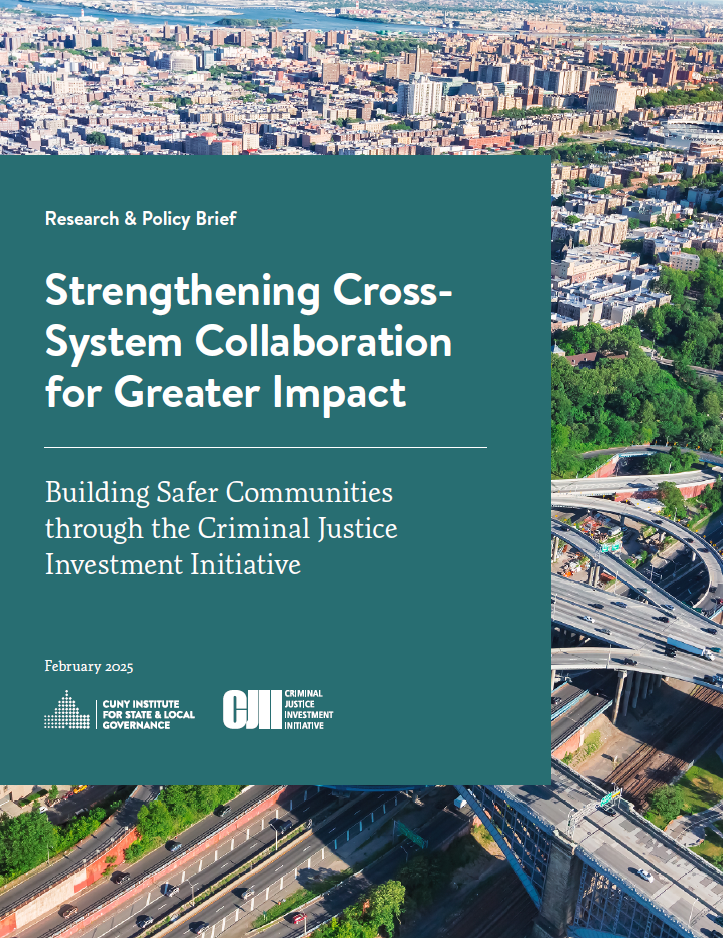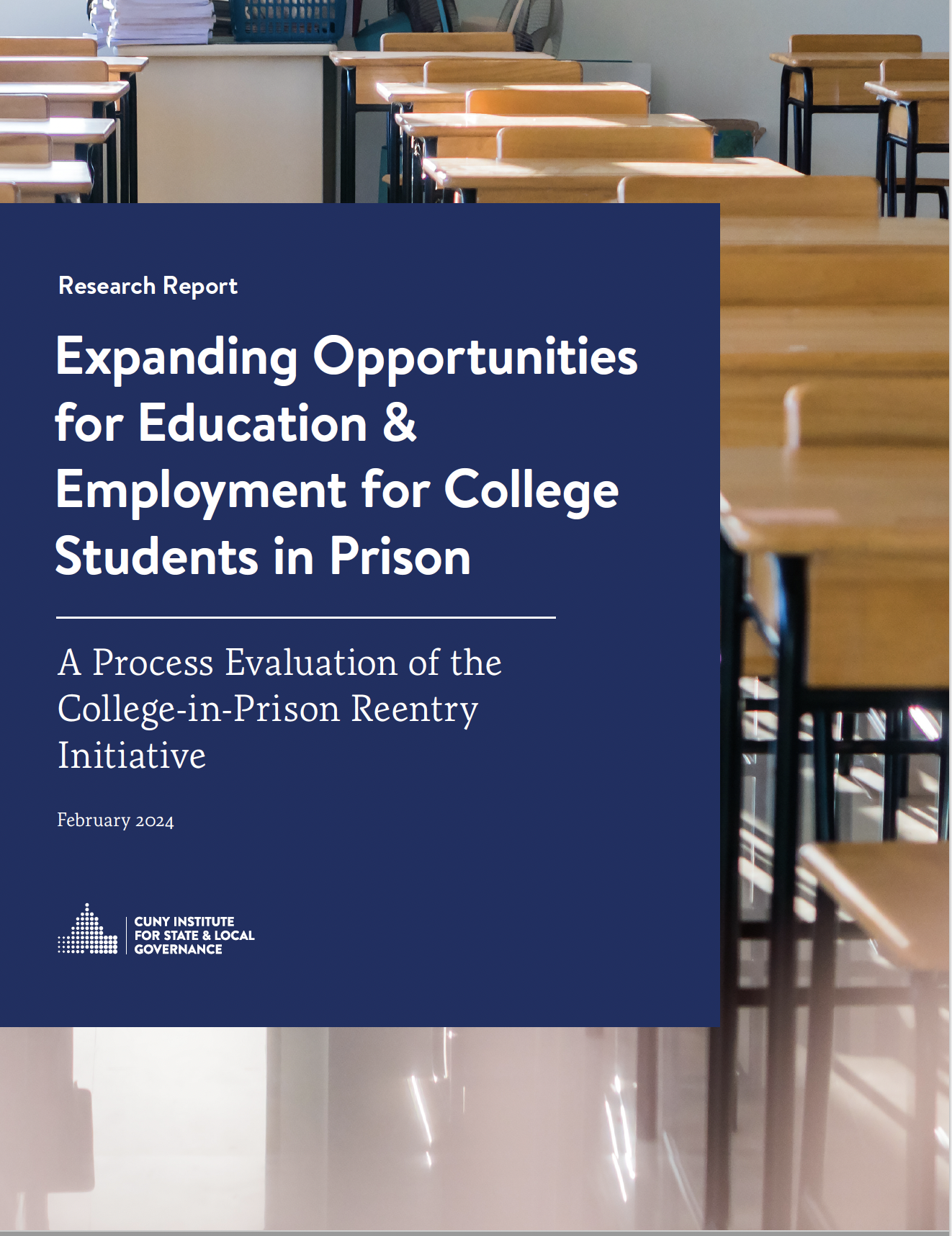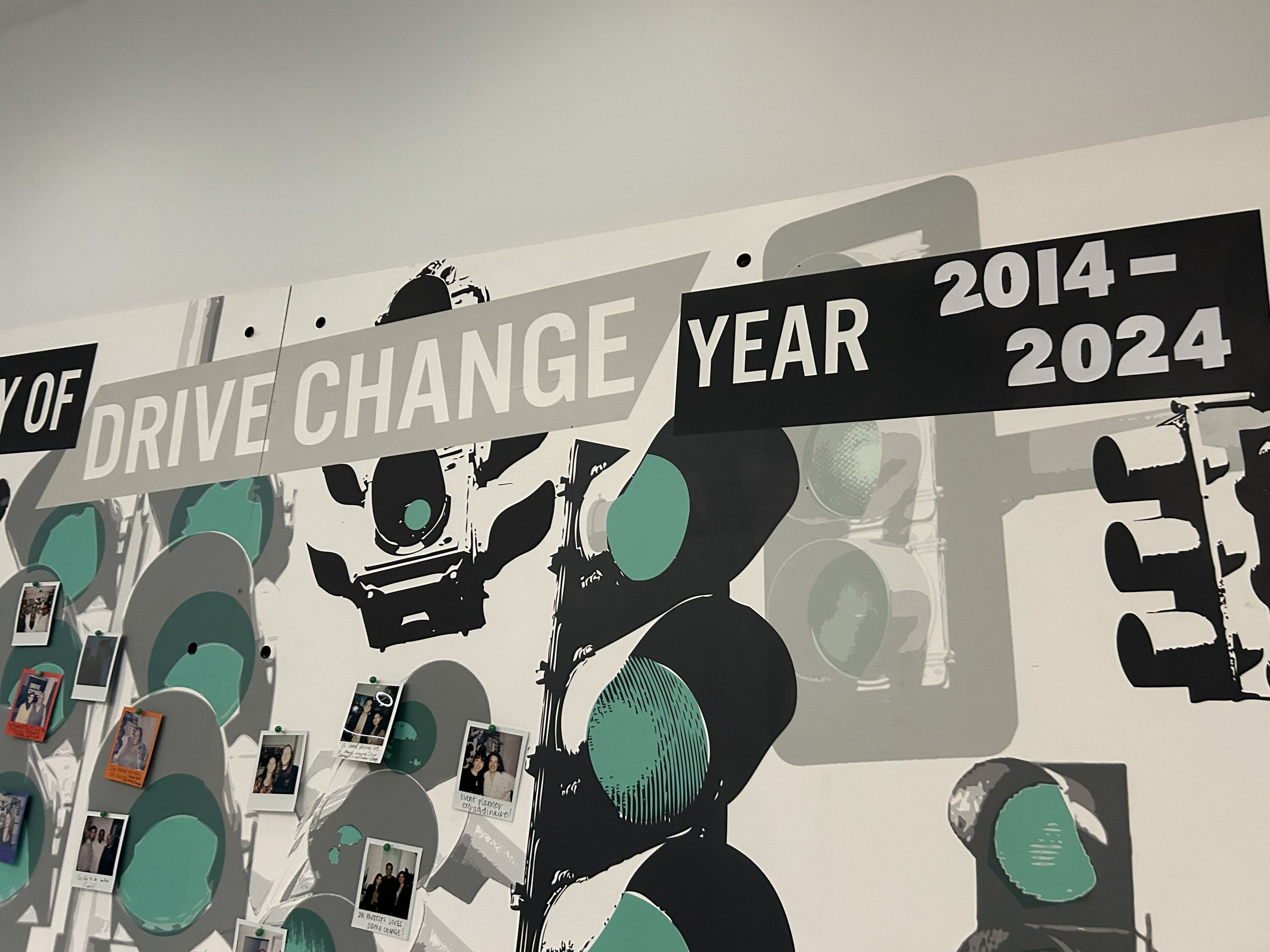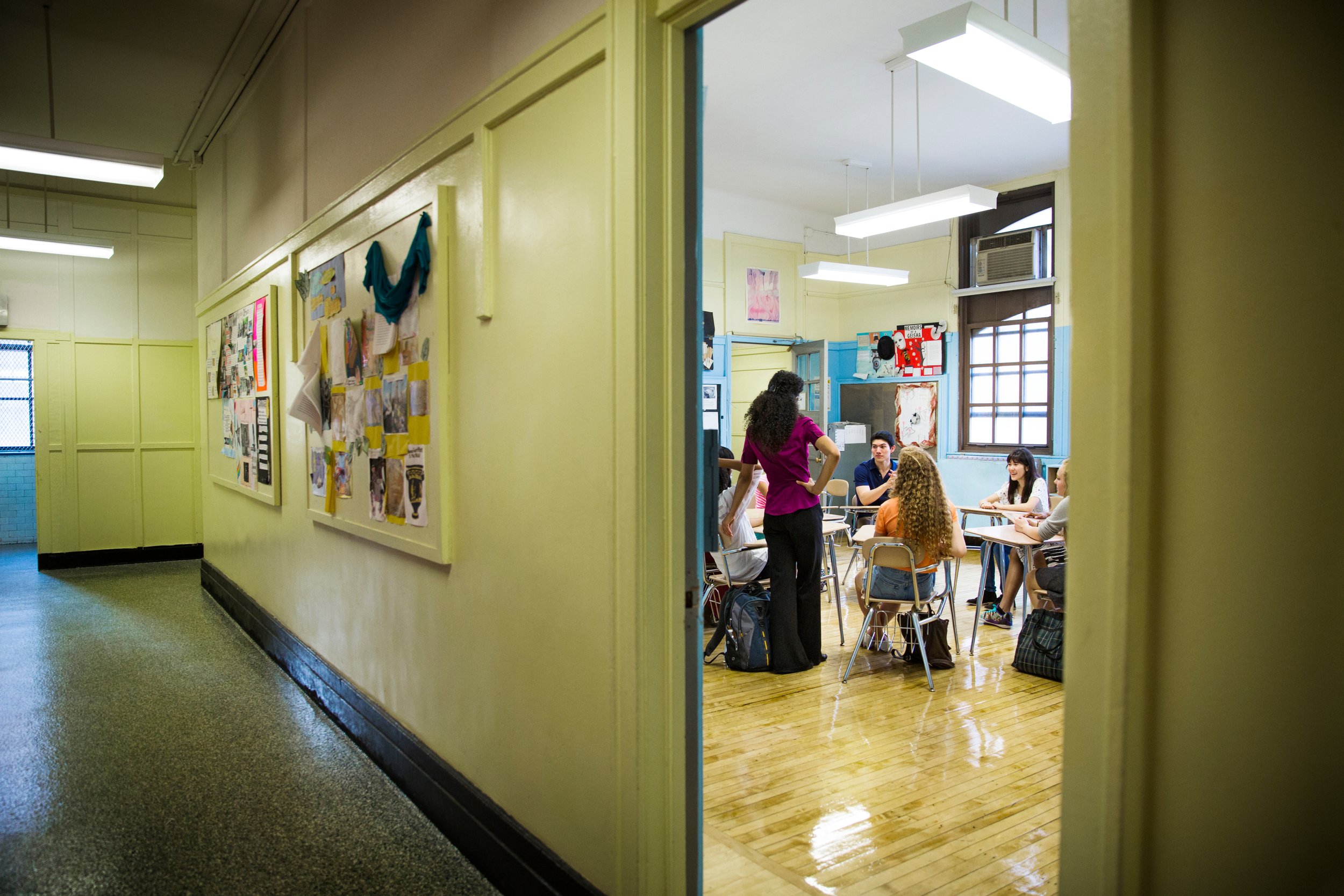
CASE STUDY
CJII: Strengthening Communities Through Investment
LOCATION
New York, New York
ISSUE
Promoting Opportunity
ACTIVE
2014-present
An innovative model for justice reinvestment and supporting community initiatives that improve community safety and create a fair, efficient criminal legal system in New York City—a model for partnership and progress for other jurisdictions nationwide.
Challenge:
Over the past few years, New York City and the nation have confronted the crises of COVID-19, racial inequality, and gun violence. It’s never been clearer that remedying the harm brought to communities by historical divestment and disparate law enforcement practices requires significant investment. Yet these challenges are nothing new; issues of fairness and efficiency in the criminal legal system—and how partnerships between the community and law enforcement could enhance them—have long been recognized as areas ripe for growth.
In 2014, then-Manhattan District Attorney Cyrus R. Vance, Jr. envisioned innovation through the reinvestment of law enforcement dollars into strategic community projects that would improve public safety, develop broad crime prevention efforts, and promote a fair, efficient criminal legal system in New York City. To that end, he established the Criminal Justice Investment Initiative (CJII) to invest approximately $250 million of criminal asset forfeiture funds over six years. Through a competitive request for proposals, the DA’s Office chose CUNY ISLG to design the investment process and manage the Initiative’s funds and grantees.
Approach:
With the goals of CJII as a north star, CUNY ISLG created a blueprint for the initiative’s investment in community-based programming, guided by three principles: data-driven decision making, sustainable investments, and collaboration across sectors. CUNY ISLG began with a community audit and consultation process across New York City to identify areas of need and opportunity in the city’s criminal justice and community infrastructure, aiming to identify gaps that could be addressed by strategic investments. That process resulted in the creation of a Strategic Plan that provides a comprehensive, forward-looking approach to improving public safety for all New Yorkers, with investments across a continuum: crime prevention, supporting access to justice for survivors of crime, and increasing diversion and reentry options.
Those targeted outcomes are supported by three coordinated portfolios of investment:
Supporting Youth and Families. Investments in this category include the Youth Opportunity Hubs initiative, a partnership with city youth-serving programs—CJII’s single largest investment; a foster youth-transitioning-to-adulthood program; and a pilot Community Navigators program that matches individuals with community and social service resources.
Supporting Survivors of Crime. Investments here include initiatives to increase survivor access to services; a Trauma-Informed Abusive Partner Intervention Program; and a Center for Trauma Innovation.
Diversion and Reentry Support. These investments span a range of reentry supports, services, and innovations such as the College-in-Prison Reentry Initiative, a five-year college programming and academic reentry services at 17 New York State prisons.
Across the initiative, CUNY ISLG manages the solicitation and contracting process, provides guidance to award recipients, and offers capacity-building, oversight, and performance measurement. CUNY ISLG also manages independent evaluations for 33 of the CJII grantees.
Progress:
To date, over 34,000 New Yorkers have received services as a result of CJII investments in transformative projects that strengthen and support the city’s youth, families, and communities. The CJII community has expanded to 65 grantees and 90+ subcontractor organizations that include nonprofits, social enterprises, hospitals, and colleges/universities. CUNY ISLG’s support has built organizational capacity through training and technical assistance—including peer-driven group sessions and individualized consulting—to promote long-term sustainability. In almost its 10th year, CJII offers a roadmap for civic leaders and investors seeking to enhance public safety by cultivating partnerships and leveraging existing strengths within communities. Findings from these programs have helped to raise the profile of justice reinvestment strategies and demonstrate that investing in community-based and grassroots organizations can build lasting change.
Contact Patrick Hart, Project Director, at Patrick.Hart@islg.cuny.edu for more information.
Project Reports
Latest Updates


![[From Our Partners] New York City Health Justice Network Recidivism Evaluation Study](https://images.squarespace-cdn.com/content/v1/5fcea962a1b4d771ad256fcc/4c7942d9-5c6a-4cd4-80d5-3bcee559f83f/Screenshot+%2847%29.png)
![[From Our Partners] The Impacts of College-in-Prison Participation on Safety and Employment in New York State](https://images.squarespace-cdn.com/content/v1/5fcea962a1b4d771ad256fcc/d4c52900-83ae-46dc-b1f3-3e540081bb4a/full+The+Impacts+of+College-in-Prison+Participation+on+Safety+andEmployment+in+New+York+State.png)


![[From Our Partners] A Community-Focused Approach to Addressing Trauma: Lessons Learned from the Center for Trauma Innovation](https://images.squarespace-cdn.com/content/v1/5fcea962a1b4d771ad256fcc/4d92b04e-7218-43d8-8576-feb0ba0379cf/Process+Report+Cover+Screenshot.png)
![[From Our Partners] Evaluation of the West Harlem Community Reentry and Restoration Project ](https://images.squarespace-cdn.com/content/v1/5fcea962a1b4d771ad256fcc/9bb14f13-b3d2-474b-9416-b5e2f2ff5ec2/full+-+Evaluation+of+the+West+Harlem+Community+Reentry+and+Restoration+Project.png)

![[From Our Partners] Build-Out of Student Services Report: Findings from the Process Evaluation](https://images.squarespace-cdn.com/content/v1/5fcea962a1b4d771ad256fcc/ba263fec-6abe-48c4-bee8-c25eb4a19844/Vera+Boss+process+evaluation+full+cover.png)

![[From Our Partners] Programs for Foster Youth Transitioning to Adulthood Evaluation](https://images.squarespace-cdn.com/content/v1/5fcea962a1b4d771ad256fcc/73c32228-3431-4ee6-b728-82e7bbf7166c/WHCRRP+mid-eval+full+cover.png)
![[From Our Partners] The NYC Health Justice Network Recidivism Evaluation Study](https://images.squarespace-cdn.com/content/v1/5fcea962a1b4d771ad256fcc/4d9294c0-a174-4547-b5a7-4bac858531b5/NYC+HJN+Evaluation+report+full+cover.png)
![[From Our Partners] FamilySafe Project Evaluation: Implementation and Outcomes of Family-Focused Counseling for Survivors of Gender-Based Violence ](https://images.squarespace-cdn.com/content/v1/5fcea962a1b4d771ad256fcc/98d9a429-34de-40f9-91bd-5634327ddb0f/Report+cover+of+FamilySafe+Project+Evaluation.png)
![[From Our Partners] Addressing Trauma Among School-Aged Children](https://images.squarespace-cdn.com/content/v1/5fcea962a1b4d771ad256fcc/d20aa296-5ce3-482e-bdad-912acc2c3e90/MP-City+Process+Eval+Report+Cover.png)
![[From Our Partners] Youth Opportunity Hubs: Fostering Collaboration. Building Resilience.](https://images.squarespace-cdn.com/content/v1/5fcea962a1b4d771ad256fcc/5d94a3aa-496a-431f-b2ff-b815bc6d7125/Youth+Opportunity+Hubs+Fostering+Collaboration.+Building+Resilience.+Policy+brief.png)
![[From Our Partners] An Evaluation of a Workforce Development Program for Domestic Violence Survivors in New York City](https://images.squarespace-cdn.com/content/v1/5fcea962a1b4d771ad256fcc/7543fe10-0203-4ccb-93ae-aaba563b4e85/SFF+CRTP+Eval+full+cover.png)
![[From Our Partners] An Evaluation of the Medical Legal Partnership](https://images.squarespace-cdn.com/content/v1/5fcea962a1b4d771ad256fcc/e612bc2f-01c6-4ef7-8d66-0ac5292c0ca7/Screenshot+2023-01-19+at+9.17.43+AM.png)
![[From Our Partners] Conducting Research with the Deaf Community](https://images.squarespace-cdn.com/content/v1/5fcea962a1b4d771ad256fcc/270b9bd7-04f6-4122-a800-46c6f7664d0e/BFL+final_full.png)
![[From Our Partners] Strengthening Domestic Violence Services for Deaf Survivors: An Evaluation of Barrier Free Living’s Deaf Services Program](https://images.squarespace-cdn.com/content/v1/5fcea962a1b4d771ad256fcc/0d149b6b-fc97-4bdb-b786-723b75cc1b48/BFL+eval+cover_full.png)
![[From Our Partners] Addressing Trauma Among School-Aged Children: Early Findings from the Implementation of the Margaret’s Place Program](https://images.squarespace-cdn.com/content/v1/5fcea962a1b4d771ad256fcc/e028e979-dc10-4926-9210-0128fedf839c/Addressing+Trauma+Among+School-Aged+Children+report+full+cover.png)
![[From Our Partners] An Evaluation of the Trauma-Informed Abusive Partner Intervention Program: Interim Results](https://images.squarespace-cdn.com/content/v1/5fcea962a1b4d771ad256fcc/1652295922257-MWJ66KAFZFSJQS1WDW4O/Screenshot+%28124%29.png)
![[From Our Partners] Peer-led Community Navigation in East Harlem: An evaluation of the Community Navigators Program at the Silberman School of Social Work at Hunter College](https://images.squarespace-cdn.com/content/v1/5fcea962a1b4d771ad256fcc/5561b442-958e-4924-adca-a4a7b26ee49a/Screenshot+%28121%29.jpg)
![[From Our Partners] An Evaluation of the Osborne Association’s Harlem FamilyWorks Program: Services Supporting Families Impacted by Incarceration](https://images.squarespace-cdn.com/content/v1/5fcea962a1b4d771ad256fcc/1649775931330-BEZR74Q0W12Y0Z19NOOC/Screenshot+%2863%29.png)
![[From Our Partners] An Evaluation of the Implementation of Project Reset: Interim Findings](https://images.squarespace-cdn.com/content/v1/5fcea962a1b4d771ad256fcc/1646674874593-759ZOBJPFNY0LLFIO6VO/Screenshot+%28104%29.png)

![[From Our Partners] Youth Opportunity Hubs: Mid-Evaluation Report](https://images.squarespace-cdn.com/content/v1/5fcea962a1b4d771ad256fcc/1642504172502-WU3303D0ZN0A6O45O0AZ/YOH_Mid-Evaluation_Report-2+cover.jpg)































